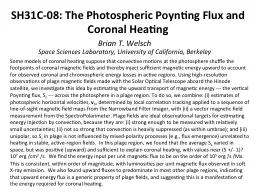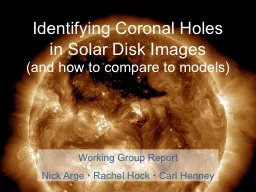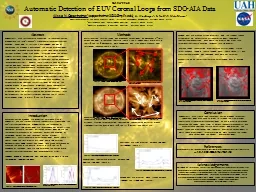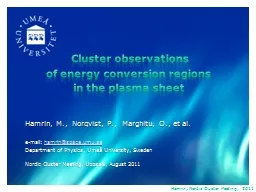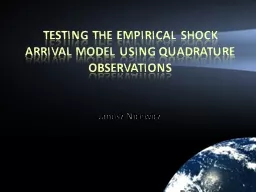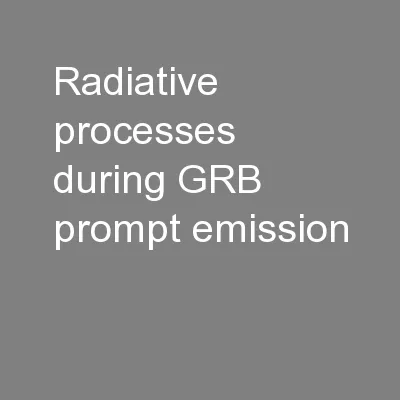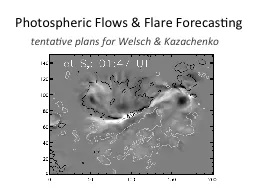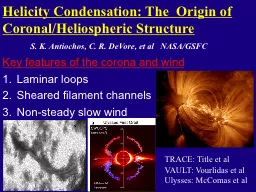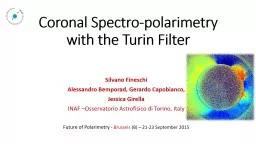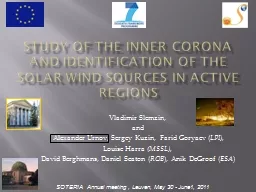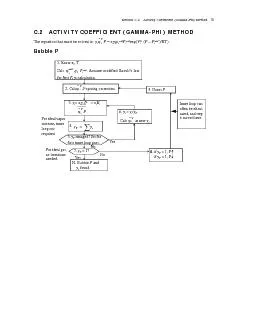PPT-SH31C-08: The Photospheric Poynting Flux and Coronal Heatin
Author : natalia-silvester | Published Date : 2016-06-17
Some models of coronal heating suppose that convective motions at the photosphere shuffle the footpoints of coronal magnetic fields and thereby inject sufficient
Presentation Embed Code
Download Presentation
Download Presentation The PPT/PDF document "SH31C-08: The Photospheric Poynting Flux..." is the property of its rightful owner. Permission is granted to download and print the materials on this website for personal, non-commercial use only, and to display it on your personal computer provided you do not modify the materials and that you retain all copyright notices contained in the materials. By downloading content from our website, you accept the terms of this agreement.
SH31C-08: The Photospheric Poynting Flux and Coronal Heatin: Transcript
Download Rules Of Document
"SH31C-08: The Photospheric Poynting Flux and Coronal Heatin"The content belongs to its owner. You may download and print it for personal use, without modification, and keep all copyright notices. By downloading, you agree to these terms.
Related Documents

